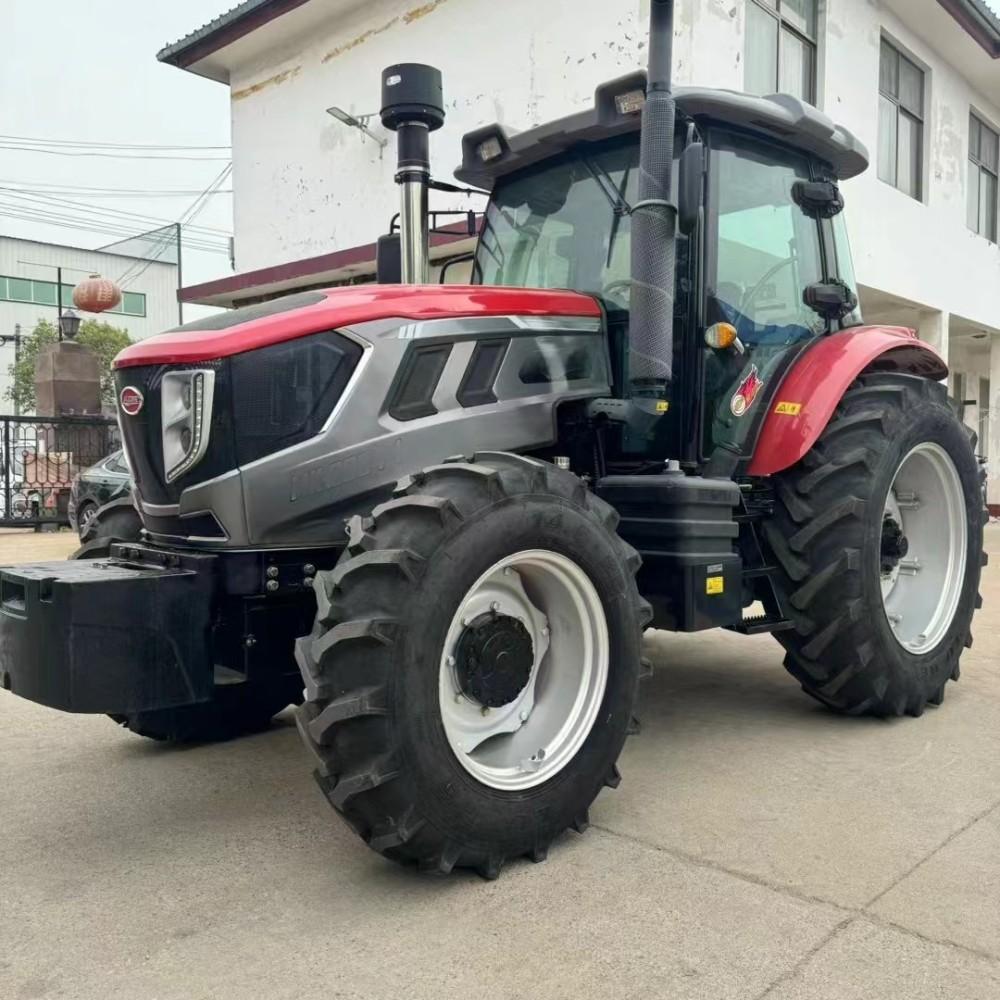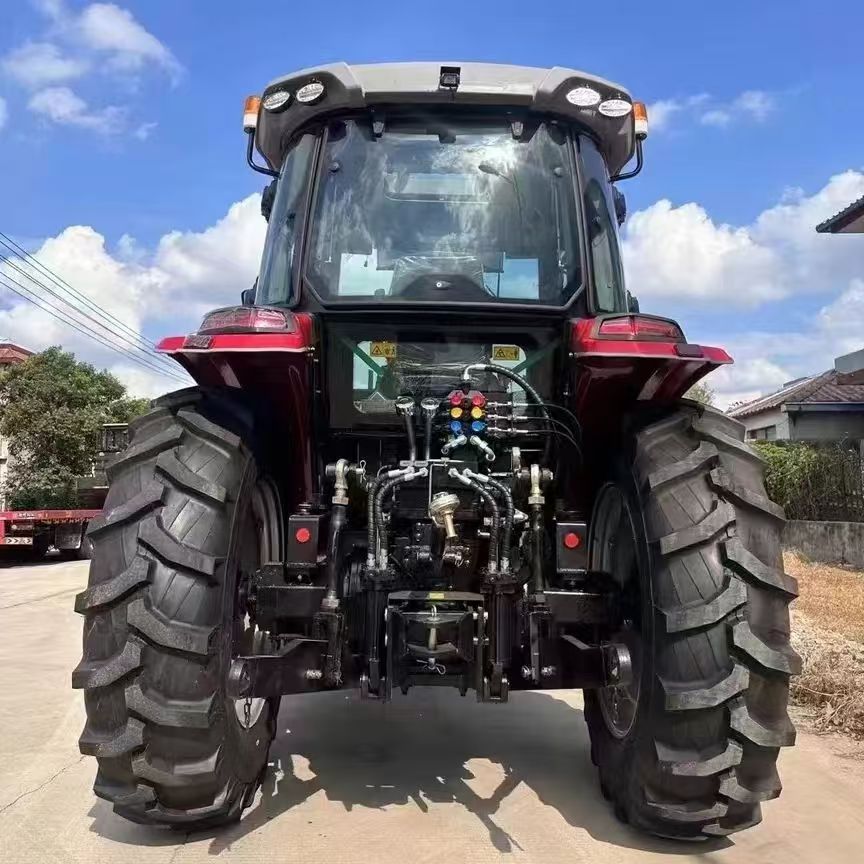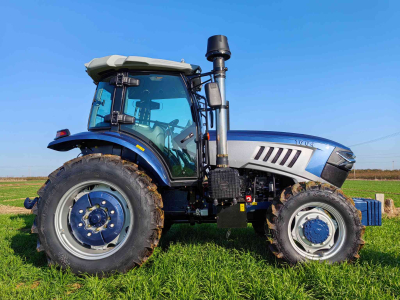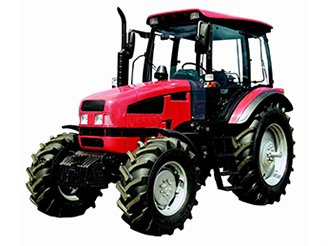Exploring the Potential for Agricultural Growth in Central Asian Countries (International Perspective)
Central Asia is an important agricultural region in the drylands of the world. In recent years, Central Asian countries have made full use of their natural resources and geographical advantages, consistently introduced policy measures, strengthened support for agriculture, harnessed the growth potential of agricultural production and promoted agricultural exports. Central Asian countries and China continue to develop cooperation in the field of agriculture and jointly promote environmentally sustainable development.
Introduction of various agricultural support programs
Kazakhstan's Minister of Agriculture Saparov recently said that the government is focusing on stimulating the transformation of agricultural production and export trade, prioritizing the development of high-value agricultural production and exports, and aiming to double agricultural exports over the next five years to $5.4 billion. The Harbin City Hall is fully implementing the “National Agricultural Development Project for 2021 - 2025”, implementing large-scale investment projects to create an integrated system of agricultural products for the production of food, oils, fruits, vegetables, sugar, meat and milk. It is expected that more than 350,000 families and family farms will be involved in the production of high value-added agricultural products.
The government of Uzbekistan has proposed additional support measures this year to boost production of cash crops such as fruits, vegetables, grains and pulses, promote the development of digital agriculture and increase agricultural exports to $3.5 billion. The Government of Ukraine has developed and implemented 52 national plans to attract additional investment in agriculture, accelerate the pace of agricultural mechanization, promote the improvement of agro-ecological landscapes and conditions of degraded rangelands in the Aral Sea region, create shelterbelts, promote water-saving technologies and efforts to mitigate the effects of change climate for agriculture.
The Government of Tajikistan recently developed the Concept for the creation and development of agricultural clusters until 2040 and the Plan for creating favorable conditions for the popularization of practical experience in agricultural production, aimed at modernizing agriculture, increasing agricultural production and improving the quality of agricultural products.
This year, Turkmenistan proposes to expand financial and technological investments, implement the strategy of “precision agriculture”, actively introduce digital agricultural technologies in the future, systematically promote the industrialization of agriculture, increase productivity through the acquisition of modern agricultural machinery, improve the efficiency of use of land and water resources, expand agricultural information and advisory services.
Kyrgyzstan is accelerating the implementation of the Kyrgyz Agricultural Development Program for 2021 - 2025 and plans to hold a national agricultural exhibition in November this year, aimed at creating a professional international trading platform for agricultural products. More than 200 companies from more than 10 countries and regions are expected to participate, promoting comprehensive international cooperation in agricultural production and exports.
Comprehensive measures to increase agricultural production
With rich agricultural resources and the potential to increase production, Kazakhstan currently ranks first in the world in food exports. According to official data from Kazakhstan, agricultural production continued to grow steadily in the first half of this year, increasing by 3.4% year on year. Growth is expected to be 11.6% for all of 2024. The Government of Kazakhstan considers developing the potential of production and export of agricultural products as an important task, increasing the added value and productivity of agricultural products as an important direction for the development of agriculture, and is constantly increasing investments in agriculture and technology. The Government of Kazakhstan is also implementing import substitution projects that promote the development of the domestic food industry through the construction of dairy farms, poultry farms, greenhouses and deep processing facilities for agricultural products.
In 2023, Uzbekistan will become the fifth largest producer and second largest exporter of cotton in the world. Uzbekistan has 4.27 million hectares of arable land and rich water resources, which provides favorable natural conditions for the development of agriculture. In recent years, the Ukrainian government has been constantly expanding investments in the agricultural sector, creating a land reclamation fund, promoting the reconstruction and construction of irrigation and drainage systems, and constantly strengthening the capacity for storage and deep processing of agricultural products. The Ukrainian government, in particular, has launched an unsecured loan program for the purchase of seeds, fertilizers, etc. to help improve agricultural productivity by subsidizing the purchase of domestic farm implements and exempting imported equipment from customs duties. The Government of Ukraine, together with the Food and Agriculture Organization of the United Nations, is implementing the Smart Farms project, aimed at increasing the efficiency and stability of agricultural production and improving the lives of the rural population, and also plans to increase agricultural production to 35 billion US dollars by 2026 by attracting foreign investment of US$1 billion per year, so that income from irrigated land reaches US$5,000 per hectare. Ukraine is actively building a modern infrastructure for the export of fruits and vegetables in Fergana, Samarkand and Tashkent International Airport.
Tajikistan is actively promoting investment projects in agriculture at the state level, accelerating the growth of agricultural production through the selection of quality seeds, strengthening agricultural support projects, and increasing subsidies to farmers. In recent years, TA has been actively promoting the cultivation of greenhouse fruits and vegetables, increasing the stability of the agricultural market and product prices in the autumn and winter. Currently, about 950 greenhouses with a total area of 166 hectares have been built in Tajikistan. To effectively solve the problem of limited arable land, short growing season and high altitudes, the Ministry of Agriculture of Tajikistan is exploring the possibility of using geothermal resources for greenhouse farming to extend the vegetable growing season and increase crop yields. At the same time, farmers are advised to rationally and effectively use unoccupied land near their yards and constantly develop new arable land. The government has also introduced a range of tariff and tax incentives on imports of agricultural technology, equipment and inputs, increased support for poultry and feed industries, and encouraged domestic entrepreneurs and foreign investment in agricultural development to ensure domestic food security and realize export potential.
In recent years, Turkmenistan has increased the efficiency and productivity of agricultural production and reduced imports of agricultural products through the implementation of a number of agricultural development programs. In order to further improve the efficiency of agricultural land use, the local government has continuously implemented reform measures, made efforts to attract private enterprises to agricultural production, and allocated land to support agricultural production of private enterprises. The reform brought significant results.
Kyrgyzstan has taken a number of measures to accelerate the process of modernization of agriculture. The current agricultural development program and other related policies are aimed at helping small and medium-sized farmers improve agricultural production efficiency and address potential problems in agribusiness development.
Actively develop agricultural cooperation with China
Currently, the five Central Asian countries are actively promoting agricultural exports to China and developing new bright spots in trade and economic cooperation. Camel milk from Kazakhstan, cherries from Uzbekistan, dried fruits from Tajikistan, honey from Kyrgyzstan, cotton from Turkmenistan are increasingly entering the Chinese market and are widely welcomed by consumers. The scale of trade in agricultural products between the countries of Central Asia and China is expanding every year, demonstrating a trend towards rapid development.
For example, in Kazakhstan, agricultural trade between China and Kazakhstan will reach US$1.36 billion in 2023, an increase of 47% year-on-year. In Harbin, 27 types of agricultural products gained access to the Chinese market. In the first half of this year, the volume of agricultural trade between China and Kazakhstan reached 648.1 million US dollars, an increase of 12% compared to the same period last year. China has become the largest export market for Kazakhstan's agricultural products. According to the Ministry of Agriculture of Kyrgyzstan, the volume of agricultural trade between Kyrgyzstan and China increased from US$47.4 million in 2022 to US$55.4 million in January - August 2023.
Currently, China Customs has opened eight green corridors for fast customs clearance of agricultural products and by-products from Central Asian countries, which cover road ports and help Central Asian countries export agricultural products to China.
Central Asian countries and China continue to deepen technical cooperation in the field of agriculture. As part of the joint construction of the Belt and Road and the SCO, Chinese enterprises and universities are collaborating with Central Asian countries to establish agricultural demonstration bases, improving the quality and production of local agricultural products. The Northwestern University of Agroforestry and Technology in Kazakhstan, Kyrgyzstan and other five Central Asian countries has jointly established eight overseas agricultural science and technology demonstration parks to carry out technical cooperation in the field of crop breeding, water-saving irrigation and soil reclamation, which significantly improves the efficiency of local agricultural production . China is also improving agricultural skills and training agricultural personnel for countries in the region through on-site training, distance guidance and training exchanges.
Northwestern University of Agriculture and Forestry Professor Yudelan said: “In Uzbekistan, based on the characteristics of sufficient sunlight in the park, we have developed and promoted solar irrigation machines, intelligent integrated irrigation equipment for water fertilizers, etc., have changed farming methods farms that were previously irrigated increased local cotton production by 50%, saved water by 50% and reduced investment by 40%.
According to Saparov, China has a wide market demand for agricultural products from Central Asian countries such as Kazakhstan, and Central Asian countries have broad prospects for exporting agricultural products from China. The parties have enormous potential for further development of cooperation in the field of agriculture.
Source: Top Official News
Author: People's Daily
Column Editor: Qin Hong
Text Editor: Song Yanlin








